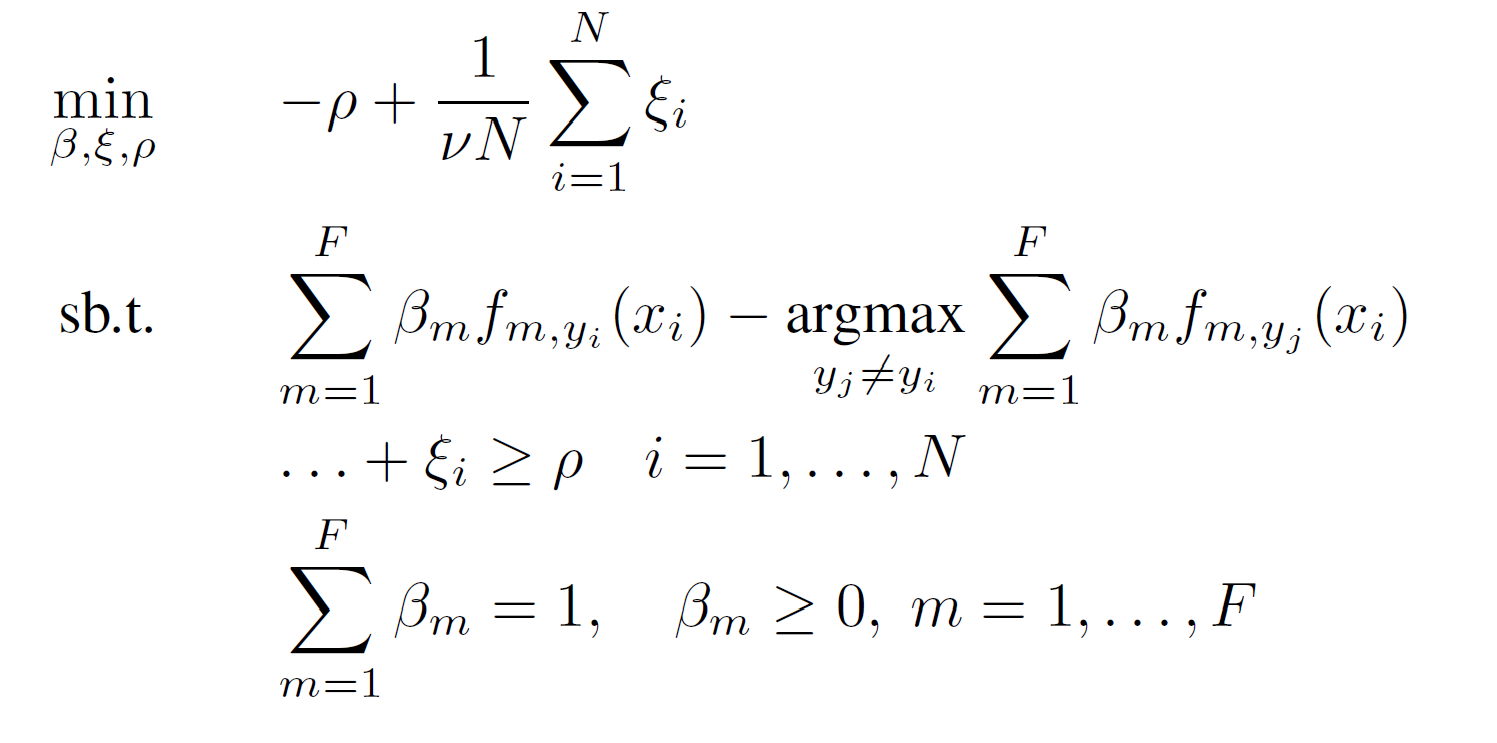Feature Combination for Multiclass Object Classification
With Clustered Dataset
Peng Wang
COSC 174 - Machine Learning and Statistical Data Analysis
Spring 2012
Problem Statement
In multiclass object classification, a key element is to design a robust identification of relevant class specification in presence of intra-class variations. However, this is a difficult problem due to high variability of visual appearance within each class. One possible approach is to adaptively combine a set of diverse and complementary features-such as features based on color, shape-in order to discriminate each class best from all other classes [1].
Inspired by Torralba and Efros's research, I proposed a variation of feature combination algorithm that implements data classification before the hyper parameters selection in the Gehler and Nowzin's approach. We anticipate that pre- data classification will yield a better training result in hyper parameters selection, which will ultimately improve the overall model performance in terms of accuracy.
Methods
My proposed model is a combination of feature combination for multiclass object classification and a clustered dataset, each of which has an associated weighting of stylistic features. I will address the methods for dealing with each aspect of the project individually.
Data clustering
An important problem when analyzing relational data between features is clustering, finding sets data sets that are "more similar" to each other in the dataset. Parameters of f_m of LP-beta are trained on clustered dataset individually. In light of domain adaptation approach, we learned that there are methods for transferring a model learned on one dataset onto another[3, 7, 8, 9]. By clustering data before classification, we believe the intra-class variations will be reduced.

- Choose clustering algorithm
- Run data clustering algorithm based on features
- Train model on each clustered dataset individually
- Build learning network among each model
- Run LP-beta algorithm
LP-beta
LP-beta method is proposed by Gehler and Nowozin as follows:

Data
In consistent with Gehler and Nowzin's study, I will apply the method to two data sets: Oxford flowers[4] and Caltech datasets[5, 6]. I might choose some other datasets for preliminary testing.
Timeline
Ultimately, the goals of my project are as follows:

Note: Dates above may be subject to change and certain goals may be shifted forward or backward in time depending on progress.
References
- P. V. Gehler and S. Nowozin, "On Feature Combination Methods for Multiclass Object Classification", IEEE International Conference on Computer Vision (ICCV), 2009.
- A. Torralba, and A. Efros, "Unbiased Look at Dataset Bias", IEEE Conference on Computer Vision and Pattern Recognition (CVPR), 2011.
- A. Bergamo, and L. Torresani, "Exploiting weakly-labeled Web images to improve object classification: a domain adaptation approach", NIPS, 2010.
- M.-E. Nilsback and A. Zisserman. A visual vocabulary for flower classification. In ICCV, pages 1447-1454, 2006.
- L. Fei-Fei, R. Fergus, and P. Perona, "Learning generative visual models from few training examples: An incremental bayesian approach tested on 101 object categories", In CVPRW, page 178, 2004.
- P. V. Gehler and S. Nowozin, "Let the kernel figure it out: Principled learning of pre-processing for kernel classifiers"' In CVPR, 2009.
- L. Duan, I.W.-H. Tsang, D. Xu, and S. J. Maybank, "Domain transfer svm for video concept detection", In CVPR, 2009.
- K. Saenko, B. Kulis, M. Fritz, and T. Darrell, "Transferring visual category models to new domains", In ECCV, 2010.
- J. Yang, R. Yan, and A. G. Hauptmann, "Cross-domain video concept detection using adaptive svms", MULTIMEDIA -07,2007.
- C. M. Bishop, Pattern Recognition and Machine Learning. Springer, 1st ed., October 2007.